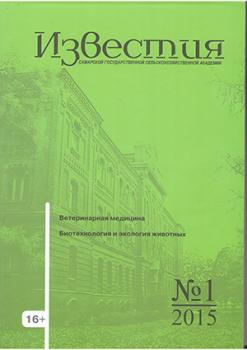p.g.t. Ust'-Kinel'skiy, Samara, Russian Federation
Samara, Russian Federation
Ural'sk, Kazakhstan
The purpose of researches is isolation and selection of source material of flax and the best typical alife plants unable to further their involvement in the selection process. Linen oilseed is a valuable crops that are widely used in the industry. From it the oil and cheap vegetable protein for animal husbandry are made. Linseed contains up to 48% oil, which is used in the form of food and industrial raw materials for number of industries. Introduction of new varieties of flax, combining high productivity and drought resistance, is the main means of improving this crop yields. In the experiment on ecological strain testing it was studied 10 varieties of oil flax selection by All-Russia Research Institute of Oil Crops and Siberian Experimental Station of All-Russia Research Institute of Oil Crops. Standard is variety of Kustanaiskii yantar. The replication of experience fourfould, the method of comparison. The area of the plot – 40 m2. The seeding rate of 7 million seeds/ha. On average for the period 2009-2014 most were maturing varieties of flax Bizon, VNIIMK 620 – 76 days. The tallest are varieties Linol – 62 cm, Severnyi, Sokol – 60 cm. The optimal indexes on the structure of crop noted at sorts Severnyi (number of boxes on one plant – 45, number of seed in box – 9, mass of 1000 seed – 7.4 g) and the Legur (number of boxes on one plant – 54, number of seed in box – 8, mass of 1000 seed – 6.5 g). Highest productivity, higher standard, formed a varieties of oilseed flax Bison (yield – 16.8 c/ga, oil – 39.6%), Rucheek (yield – 14.2 c/ga, oil – 43.1%), Severnyi (yield – 14.0 c/ga, oil – 43.6%).
flax, grade, height, and plant productivity
1. Cherkasov, O. V. Functional ingredients in human nutrition // Innovative directions and methods of implementation of scientific research in agribusiness : proceedings of sci.-pract. conf. - Ryazan : Ryazan State Agrotechnological University, 2012. - P. 274-277.
2. Vinogradov, D. V. Experimental substantiation of technology of cultivation of flax Sanlin varieties / D. V. Vinogradov, A. V. Polyakov, A. A. Kuntcevich // Bulletin of FSBEI HVE Ryazan State Agrotechnological University. - 2013. - №2(18) - P. 7-12.
3. Gordeeva, E. A. Effect of a growth promoter in the structure of yield and seed yield of oilseed flax in the dark chestnut soils of Akmola region // Seyfullinskie reading - 9: a new vector of development of higher education and science : mat. of the Republican scientific-theoretical conference. - 2013. - Vol. 1, P. 1. - P. 248-250.
4. Avdeenko, A. P. The impact of modern preparations and seeding rates on the yield of flax grown for NO-TILL technology / A. P. Avdeenko, I. N. Shestov, G. V. Mokrikov, A. G. Arkhipov // Innovations in technologies of cultivation of agricultural crops : proceedings of the International sci.-pract. conf. - 2015. - P. 226-230.
5. Maslinskaya, M. E. Sources of commercially valuable traits to create varieties of flax, adapted to the conditions of Belarus / M. E. Maslinsky, E. L. Andronicus // Bulletin of the Buryat State Agricultural Academy. - 2013. - №2. - P. 88-93.
6. Titok, V. V. Flax physiology and biochemistry / V. V. Titok, V. A. Lemesh, S. I. Yurenkova, L. V. Khotyleva. - Minsk : Belarusian Navuka. - 2010. - 335 p.
7. Food and Agricultural Organization of the United Nations. Economic and Social Department. The Statistical Division, 2011.





